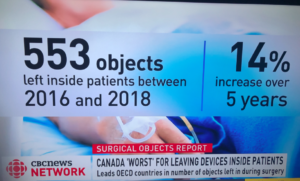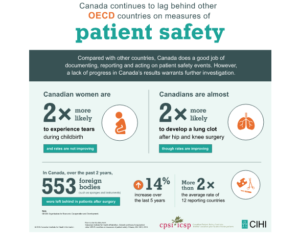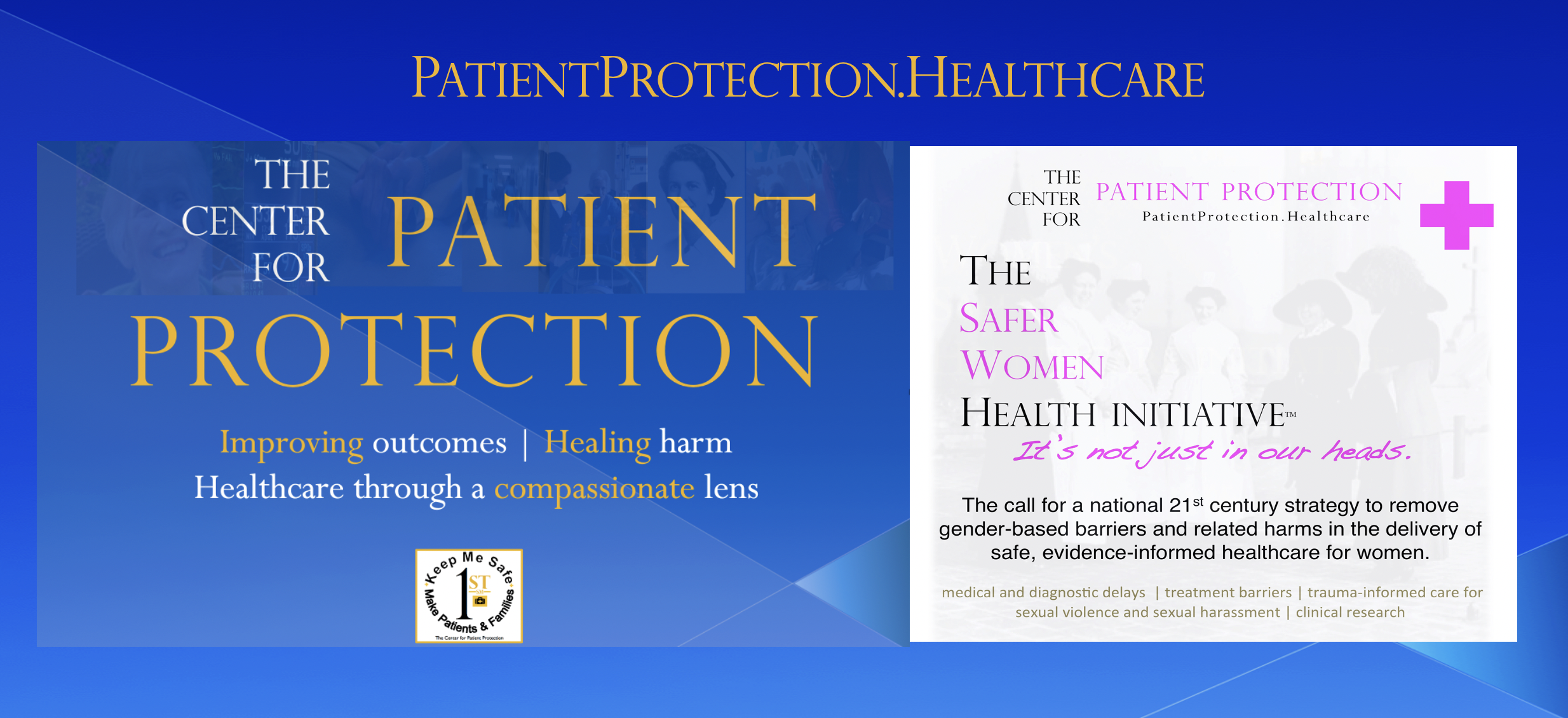If you knew that at least one jumbo jet will crash every week, killing everyone on board, would you have confidence flying on one? Probably not. But every week, nearly 600 hospitalized patients in Canada die from medical errors, many of which are avoidable. Many more are injured, sometimes permanently. The toll on families is staggering. The cost to our healthcare systems is astronomical. In the U.S., estimates of medical error death range from 250,000 (Johns Hopkins, 2016) to 440,000 (John. T. James, PhD, 2013) every year.
Medical errors harm patients in every care function
 Shockingly, hospital harm is the third leading cause of death in the U.S. and Canada.
Shockingly, hospital harm is the third leading cause of death in the U.S. and Canada.
Reliable estimates report 15 million hospitalized Americans are harmed by medical errors every year. A Canadian study estimated that some 138,000 patients were harmed by medical errors in the hospital setting between 2014 and 2015. Because of uneven reporting of medical errors, and studies that show patient harm is often not recorded in the patient’s chart or other records, these figures may be low. Canada holds the worst patient safety ratings of 12 OECD countries in certain important categories.
The most common causes of hospital harm are medication errors (for example, being given the wrong drug, or the right drug in the wrong dose); infections (which can result from improper cleaning of medical instruments or contact with healthcare workers who haven’t washed their hands); falls (often a side-effect of medication); blood clots; and surgical errors (for example, leaving sponges or other instruments in the body, or operating on the wrong part of the body).
The hospital community and the healthcare professions have been aware of the problem of medical errors for some time. But it was not until 1999, and a report by the prestigious Institute of Medicine, that the issue was brought more sharply into public focus. That report sounded the first real alarm about avoidable deaths caused by hospital harm and attempted to galvanize public opinion. As you will see from the accompanying video summary of a hearing held by the U.S. Senate in July of 2014, the problem has become worse, not better, over the years.
Harmful care is more expensive than safe care
Medical errors carry a big price tag — at least $20 billion annually in the U.S. Canadian estimates conservatively place that figure at $1 billion, for Ontario alone. While that seems very low compared with the U.S., it would be enough to fund the equivalent of a 1,117-bed hospital operating at 100% capacity every day for a year.
Any way you cut it, it’s money that could have been used to hire more nurses or purchase life-saving therapies and technologies. Instead, it’s being used to treat the harmful effects of conditions that never should have occurred in the first place. The emotional cost to patients and families is beyond calculation. We hear about them every day. What makes all of this so much more tragic is that the harm caused by medical errors and breakdowns in care is, for the most part, preventable.
Everyone is impacted by the epidemic of medical errors
If you haven’t been directly touched by hospital harm, maybe you know a family who has been. As a taxpayer, or an employer that provides healthcare benefits, you probably don’t like seeing good money wasted, either. However you look at it, this epidemic is your business.
And each voice can make a difference in making care safer
 It’s time to take the harm out of hospital care. This epidemic won’t end until more of us stand up and demand the safe care we have all been promised. Hospitals know how to stop the harm being done to patients. Some have made great progress already. And more robust transparency and accountability would help others to follow. That’s why The Center for Patient Protection has launched its campaign Keep Me Safe — Make Patient Protection 1stSM.
It’s time to take the harm out of hospital care. This epidemic won’t end until more of us stand up and demand the safe care we have all been promised. Hospitals know how to stop the harm being done to patients. Some have made great progress already. And more robust transparency and accountability would help others to follow. That’s why The Center for Patient Protection has launched its campaign Keep Me Safe — Make Patient Protection 1stSM.
But the real cure for this epidemic starts with you. Make yourself informed about the facts. Read about the tragic experiences of other families told in their own voices. Become a champion for patient safety to make Patient Protection 1stSM. Write to your elected representatives in the state or province where you live. Contact elected federal officials. Take up the cause on social media. Insist upon change. Above all, don’t wait until you or a loved one are harmed by an epidemic of medical errors that is avoidable.
You may not have any medical training, but you can play a huge role in stamping out this killer epidemic.
You’ll be glad you did.
U.S. Senate Hearings on Hospital Harm

 Shockingly, hospital harm is the
Shockingly, hospital harm is the 
 It’s time to take the harm out of hospital care. This epidemic won’t end until more of us stand up and demand the safe care we have all been promised. Hospitals know how to stop the harm being done to patients. Some have made great progress already. And more robust transparency and accountability would help others to follow. That’s why The Center for Patient Protection has launched its campaign Keep Me Safe — Make Patient Protection 1stSM.
It’s time to take the harm out of hospital care. This epidemic won’t end until more of us stand up and demand the safe care we have all been promised. Hospitals know how to stop the harm being done to patients. Some have made great progress already. And more robust transparency and accountability would help others to follow. That’s why The Center for Patient Protection has launched its campaign Keep Me Safe — Make Patient Protection 1stSM.